Climate impact
Cycling is a big part of the culture in Copenhagen, and the city’s efforts to build a bike-friendly environment have played a major role in making cycling the most popular mode of transport. Copenhagen has invested in a comprehensive dedicated cycling infrastructure with separate cycle lanes and safe intersection design, as well as bicycle parking stands and DIY repair stations. Car driving is discouraged by limited parking spaces, high parking costs and banning vehicles from several streets.
In 2018, some 49% of commuter trips were made by bike in Copenhagen. Copenhageners say they choose to cycle because it is faster, easier and good exercise.
A Copenhagener bikes on average three kilometres every day. If the inhabitants of other functional urban areas in the Nordics cycled three kilometres a day and half of the additional cycling replaced current urban car travel, it would reduce emissions by 0.8 MtCO2.
Costs and savings
Bike lanes and the related infrastructure are constructed by the municipalities. Over the past ten years investments in cycling-related initiatives in Copenhagen were about two billion Danish kroner. This translates to a cost of three euro cents per kilometre biked by a Copenhagener.
As biking often does not replace a car completely, we compare the cost of cycling to the resulted fuel saving, which we estimate to be around 10 cents per passenger kilometre in urban driving. Half of the increased cycling is assumed to replace public transport use or walking, which we assume not to bring any cost savings to the cyclist and municipality combined. We estimate the weighted average abatement cost to be –287 €/tCO2.
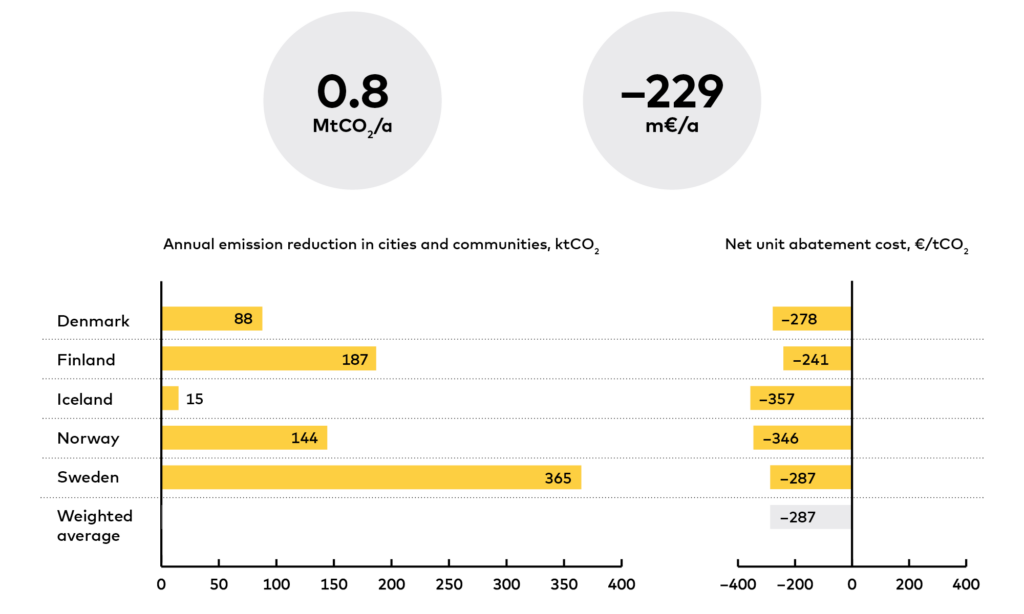
Other benefits
Cycling has major health benefits.
In Copenhagen, residents who cycle request 1.1 million fewer sick days annually, and every kilometre by bike instead of by car is estimated to bring a one euro gain in health benefits. Biking also decreases congestion and air pollutants. As biking is a low-cost transport method, it creates more equal opportunities for people to move around and increases social cohesion between areas.
Barriers
- Often the biggest barrier to cycling is the convenience of car travel. Among other things, this is because cars have been prioritised in traffic policy and spatial planning. Parking tends to be subsidised as the price of parking often does not reflect the true costs and value of the space.
- Safety risks because of a lack of a proper dedicated cycling infrastructure or its inadequate maintenance also discourage cycling, as does a lack of secure bike parking.
- Long distances, difficult terrain and bad weather conditions can also hinder cycling.
Enablers
- Copenhagen’s cycling success is a result of treating cycling as an equal means of transport with cars, and in some cases prioritising it over cars. The convenience of cycling is guaranteed by a widespread, well-maintained, dedicated infrastructure and traffic design ensuring the safety of cycling, enough secure bike parking and the ability to combine cycling with the use of public transport.
- Copenhagen also offers shared electric bikes. E-bikes can encourage commuting even longer distances by bike.
- In order to increase the share of cycling, it is often necessary to discourage driving. In Copenhagen, high fuel prices, taxes and parking prices as well as limited parking spaces and car access in inner Copenhagen all help maintain the attractiveness of the bike.
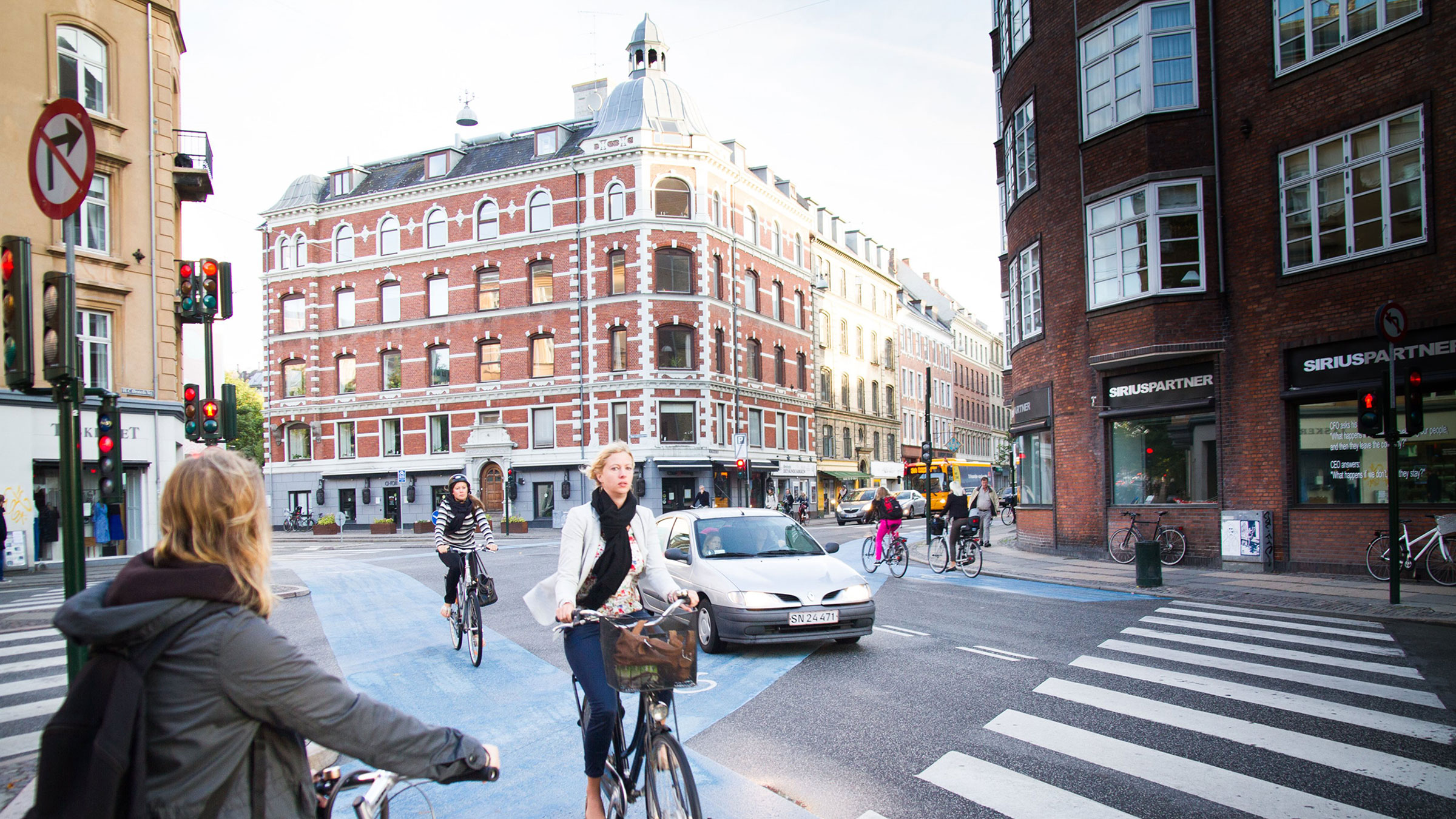








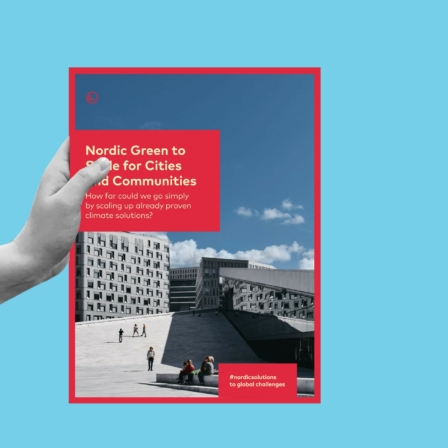
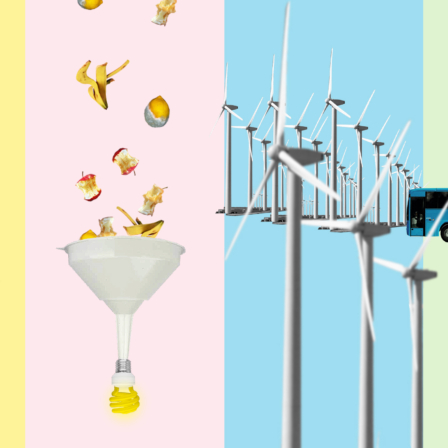
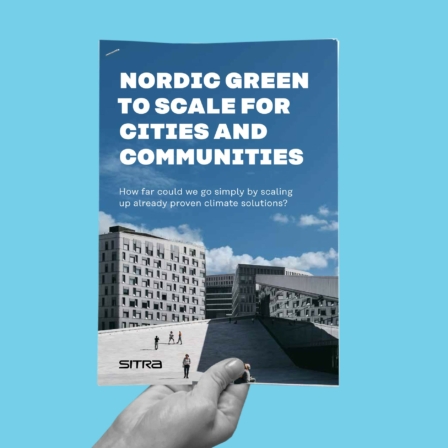











RELATED SOLUTIONS